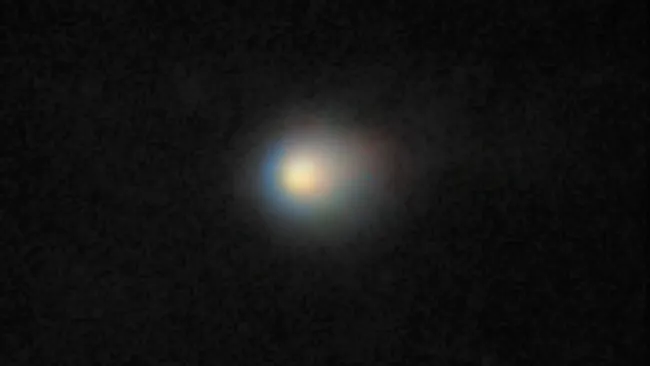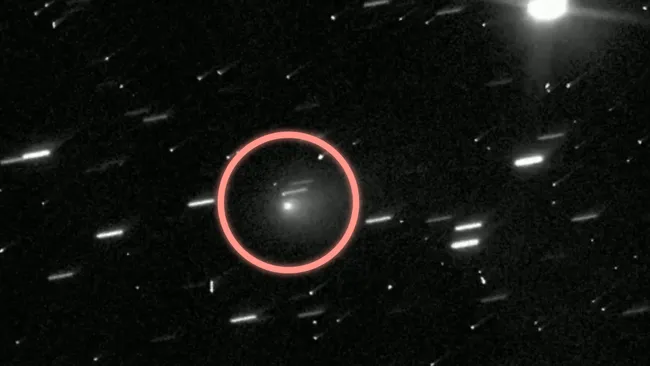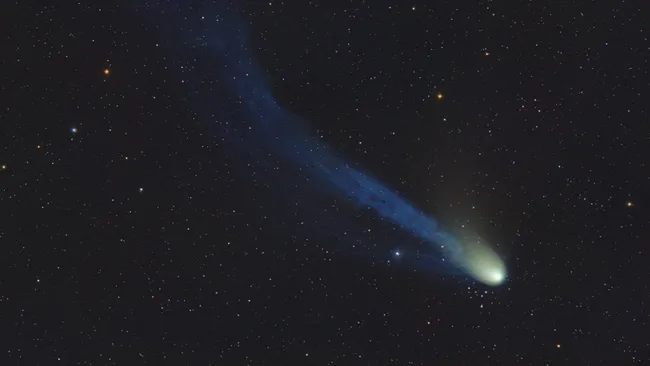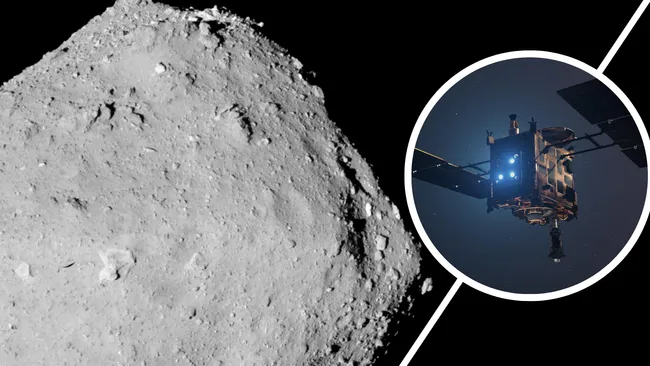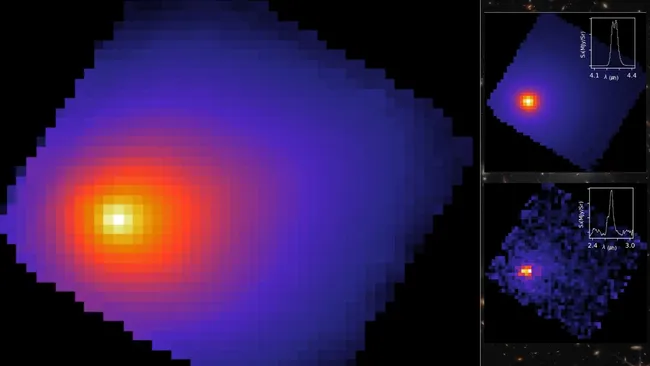A newly discovered interstellar comet, 3I/ATLAS, has been captured speeding through the solar system by the Gemini North telescope in Hawai‘i. The striking image was taken as the comet passed just 290 million miles (465 million kilometers) from Earth.
Initially spotted on July 1 by the ATLAS (Asteroid Terrestrial-impact Last Alert System) survey, this object is now confirmed as only the third interstellar object ever detected within our solar system — following 1I/‘Oumuamua in 2017 and 2I/Borisov in 2019.
Martin Still, program director at the National Science Foundation’s International Gemini Observatory, emphasized the telescope’s rapid responsiveness in collecting early data:
“The sensitivity and scheduling agility of the International Gemini Observatory has provided critical early characterization of this interstellar wanderer.”
A Cosmic Time Capsule
Unlike typical comets from our own system, interstellar objects like 3I/ATLAS are ejected remnants from distant planetary systems. These ancient travelers carry chemical signatures from their system of origin, offering scientists rare insights into how other planetary systems may have formed.
What makes 3I/ATLAS particularly compelling is its size: at an estimated 12 miles (20 kilometers) in diameter, it is significantly larger than previous interstellar objects. This makes it far easier to observe and study.
Recent high-resolution images from Gemini North reveal that 3I/ATLAS has a compact coma—the bright, hazy cloud of dust and gas surrounding the icy nucleus of a comet. Additional studies suggest it may be the oldest comet ever detected, potentially originating from the thick outer disk of the Milky Way, far beyond our own solar system’s bounds.
A Rare Opportunity
Despite the likelihood that such objects pass through our solar system regularly, their fleeting appearances and distant origins make them difficult to detect. The discovery of 3I/ATLAS, with its substantial size and vivid coma, presents a rare opportunity to probe the chemistry and composition of a true galactic wanderer.
Scientists now look forward to observing how it evolves as it nears the sun, hoping to gather more data before it vanishes back into the vast darkness between the stars.

